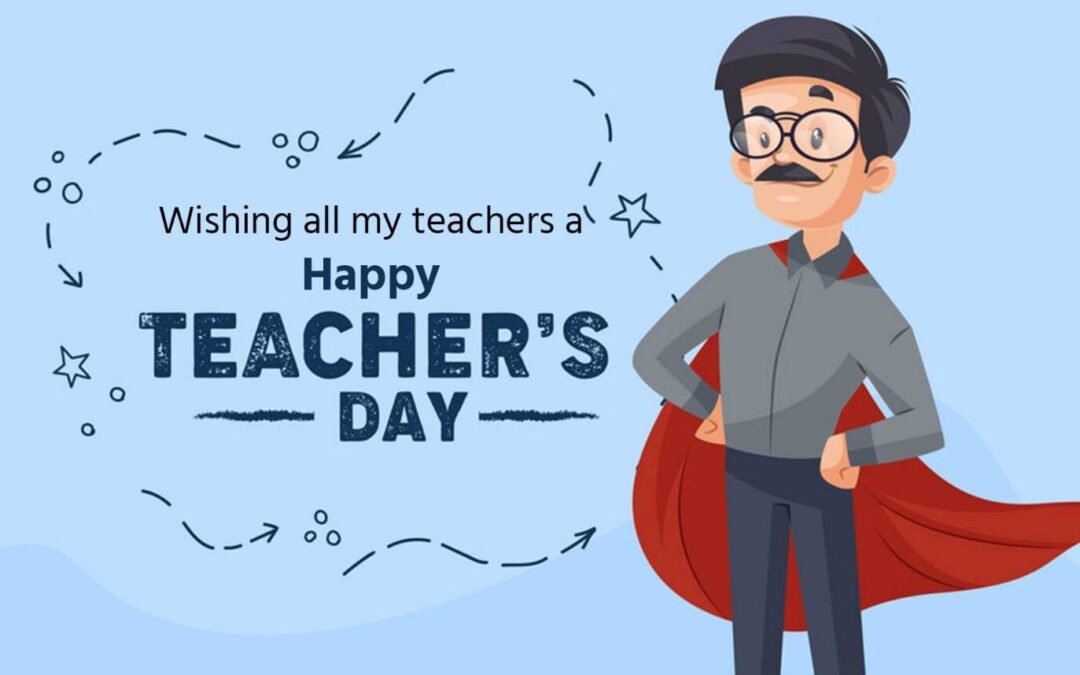Teachers’ Day celebrates educators’ dedication, and how they use modern tools like social media to enhance their educational impact. Indian educators and institutions have skillfully used social media to expand their reach, connect with students, and grow their businesses. Let’s explore how social media has benefited educators and companies in India, with examples illustrating their innovative approaches.

The Power of Social Media in Education
Social media platforms like Facebook, Instagram, LinkedIn, and YouTube have transformed the educational landscape. They offer a range of tools that educators can use to engage with their audience, share knowledge, and build their brand. For teachers and educational businesses, social media provides a platform to reach a wider audience. To create engaging content, and interact with students and parents.
1: Physics Wallah – Building a Brand Through Authenticity
Physics Wallah, founded by Alakh Pandey, has become one of the most popular online education platforms in India, particularly for students preparing for competitive exams. What sets Physics Wallah apart is its focus on affordability and authenticity.
- YouTube Engagement: Physics Wallah started as a YouTube channel where Alakh Pandey shared free physics tutorials. His straightforward teaching style. Combined with a deep understanding of student needs, resonated with millions of students. Nowadays, the channel has millions of supporters, and the brand has extended into a full-fledged ed-tech stage.
- Interactive Live Sessions: The use of live sessions on YouTube and other platforms has allowed Physics Wallah to interact directly with students. Answering their questions in real time. This level of engagement builds a loyal community and fosters trust among students.
- Social Media Marketing: Social Media Promoting: Material science Wallah leverages social media stages like Instagram and Facebook to share victory stories, motivational substance, and overhauls around modern courses. This consistent online presence has helped the brand grow organically. Reaching a wide audience without heavy reliance on paid advertising.
2: Khan Sir – Connecting with the Masses
Khan Sir, a popular educator from Patna, has gained fame for his unique teaching style and ability to simplify complex topics. His use of colloquial language and relatable examples has made him a favorite among students, particularly those from rural areas.
- YouTube Popularity: Khan Sir’s YouTube channel, where he covers topics ranging from general studies to current affairs, has amassed millions of subscribers. His videos often go viral, thanks to his engaging teaching methods and humorous delivery.
- Facebook and Twitter Interaction: Khan Sir uses Facebook and Twitter to share updates, interact with students, and provide additional resources. His active social media presence allows him to connect with a broader audience and maintain engagement outside of his YouTube channel.
- Brand Growth: Despite starting with minimal resources, Khan Sir has successfully grown his brand through word-of-mouth and social media. His relatable approach has turned him into a household name, proving that authenticity and a deep understanding of the audience are key to social media success.
3: Teachmint – Bridging Gaps with Technology
Teachmint, an Indian startup that provides an online platform for teachers to conduct live classes, is another excellent example of leveraging social media for business growth. Founded in 2020, Teachmint has quickly grown to become a major player in the online education sector.
LinkedIn Success: Teachmint has used LinkedIn to establish itself as a thought leader in the education technology space. They regularly share updates about their platform, industry trends, and success stories, helping them connect with educators and potential partners.
Community Building on Facebook: The company has created a Facebook community for educators, where teachers can share experiences, discuss challenges, and get tips on using the platform effectively. This community-building approach has helped Teachmint foster a strong relationship with its users.
YouTube Tutorials: Teachmint’s YouTube channel provides tutorials and webinars on how to use their platform effectively. These videos help new users get started and provide existing users with advanced tips and tricks.
4: Pratham Education Foundation – Engaging through Storytelling
Pratham Education Foundation, a non-profit organization dedicated to improving literacy and education in India, has also leveraged social media to further its mission. Established in 1994, Pratham has used social media to raise awareness about its initiatives and engage with supporters.
Storytelling on Instagram: Pratham’s Instagram account is filled with compelling stories of students and teachers who have benefited from their programs. These stories, accompanied by powerful visuals, help humanize the organization and attract support from potential donors and volunteers.
Facebook Fundraising: Pratham has used Facebook’s fundraising tools to support its initiatives. Through targeted campaigns and engaging posts, they have raised significant funds to support their educational programs.
Twitter Engagement: Pratham actively engages with its followers on Twitter, sharing updates about their programs, research findings, and educational insights. This real-time interaction helps them build a strong online presence and connect with a global audience.
5: Byju’s – Revolutionizing Learning with Social Media
Byju’s, one of India’s largest ed-tech companies, is a prime example of how social media can be harnessed for educational growth. Founded in 2011, Byju’s started as a coaching class for school students but has now evolved into a global leader in online education. The company has effectively used social media to enhance its brand presence and attract students.
Facebook & Instagram Campaigns: Byju’s has run successful ad campaigns on Facebook and Instagram, targeting specific demographics based on interests, age, and educational needs. Their engaging video content and interactive posts have helped them connect with students and parents, driving traffic to their app and website.
YouTube Channel: Byju’s YouTube channel offers free educational content that provides a glimpse into their paid offerings. Their use of engaging videos and expert tutorials has not only attracted millions of subscribers but also positioned Byju’s as a leader in the educational space.
Influencer Collaborations: Byju’s has also collaborated with influencers and educational content creators to expand their reach. These partnerships have helped them tap into new audiences and build trust among potential users.
Best Practices for Educators on Social Media
From these examples, several best practices emerge for educators looking to grow their business through social media:
- Define Your Goals: Before diving into social media, clearly define what you want to achieve. Whether it’s increasing brand awareness, driving traffic to your website, or engaging with your community, having clear goals will guide your strategy.
- Create Valuable Content: Share content that is informative, engaging, and relevant to your audience. This could include educational videos, success stories, or tips and tricks related to your field.
- Engage with Your Audience: Lock in with Your Group of Onlookers: Social media is not fair approximately broadcasting your message; it’s moreover almost connected with your group of onlookers.
- Use Analytics: Leverage social media analytics tools to track your performance. Monitor metrics such as engagement rates, click-through rates, and follower growth to understand what’s working and what needs adjustment.
- Collaborate with Influencers: Partnering with influencers or thought leaders in your field can help you reach new audiences and build credibility. Select collaborators who align with your brand’s values and target audience.
- Stay Consistent: The importance of consistency in social media marketing cannot be overstated. Maintain a regular posting schedule and ensure your messaging is consistent across all platforms.
Conclusion
Social media has become a powerful tool for educators and educational businesses in India. By embracing platforms like Facebook, Instagram, LinkedIn, and YouTube. Educators can expand their reach, engage with their audience, and grow their businesses. The success stories of Byju’s, Teachmint, and Pratham Education Foundation highlight the potential of social media to transform the educational landscape. As we celebrate Teachers’ Day, let’s recognize the innovative ways in which educators are using social media. To enhance their impact and connect with students and communities. If you require any additional details or explanation regarding Teachers’ Day special blog please don’t hesitate to ask!
FAQs
Q1 For Teacher’s Day, how can I make posts and reels that work?
A detailed guide will help you organize, produce, edit, and share your content. Use popular music, captivating images, and pertinent hashtags.
Q2 On Teacher’s Day, what kind of content should I post?
Quotations, teacher highlights, and instructional materials. Reels and videos work especially well for capturing viewers’ attention quickly.
Q3 How can I boost social media activity on Teacher’s Day?
Utilize personalized content, interactive polls, and hashtags to maintain engagement with your audience. Engagement is also increased by challenges, stories, and reels.
Q4 What is the best way to commemorate Teacher’s Day using YouTube?
Post tribute films, interview segments, or instructional advice. For longer, more in-depth stuff, YouTube is perfect.

